#Khanty-Mansiysk Autonomous okrug
Explore tagged Tumblr posts
Text



sketches at lectures.
berries of the khanty-mansiysk autonomous okrug, eivor, classmates.
2 notes
·
View notes
Text
In the Khanty-Mansiysk Autonomous Okrug, a priest, at the request of the police, blessed the most dangerous sections of the road.
Water in the cold
39 notes
·
View notes
Text
Siberia: To Be or Not to Be? | #6 Scenario: Scenario 1. One-stage eruption of the Siberian plume. Eruption parameters

ALLATRA volunteer reveals the future of all humanity…
Comparison of Volcanoes
Thus, we have to state that in the event of an eruption of the Siberian Plume, there will be three deadly radii.
The first radius: a caldera with a radius of 93 miles (150 km). Its approximate center will be located in the northwestern part of the Putorana Plateau. Within this radius are the cities of Norilsk, Dudinka, and Talnakh in Krasnoyarskiy Krai. Everyone within this radius will perish instantly in the first seconds of the Siberian Plume explosion.


map location


The second radius: The spread of lava and the ejection of heavy pyroclastic fractions, reaching approximately 950 miles (1,500 kilometers). This area includes a large part of northern Siberia, encompassing territories such as the Yamalo-Nenets Autonomous Okrug, the Taymyr Peninsula, parts of the Khanty-Mansi Autonomous Okrug, the northern Krasnoyarskiy Krai, the western part of Yakutia, and the northeastern European part of Russia. Major cities within this radius include Igarka, Novy Urengoy, Nadym, Salekhard, Vorkuta, Naryan-Mar, Mirny, Kogalym, Lesosibirsk, Surgut, Krasnoyarsk, Khanty-Mansiysk, Tomsk, and Nizhnevartovsk. Within this radius, lava and pyroclastic flows will incinerate all living beings and bury the territory, cities, and natural resources within the first few hours of the eruption. A mixture of hot gases, ash, and lava is expected to move at speeds of up to 450 mph.
Look at the map: everything within the orange circle will be consumed by scorching lava and pyroclastics in the first hour and a half after the plume explosion.

The third radius: The ejection of fine pyroclastic material and deadly ash approximately to 5,600 miles (9,000 kilometers). The radius encompasses half of the Earth’s surface, accounting for 50% of its area. Populations of Russia, Asia, Europe, the Arabian Peninsula, North Africa, and North America will be the first to perish from the ash fallout in the initial days following the eruption. However, within a week, the deadly ash cloud will reach Australia, South America, and even Antarctica. While respirators might provide a temporary solution, this doesn’t take into account additional critical factors that must also be considered.



Shockwave
These additional factors include the shockwave, secondary magnitude 10 earthquakes, tsunamis, and the activation of supervolcanoes worldwide. An explosion of the magnitude produced by the Siberian Plume will inevitably trigger a chain reaction, secondary earthquakes, and eruptions across volcanic systems. This conclusion is based on the following mathematical calculations:
The potential explosion of Yellowstone is estimated to release nearly 900,000 megatons of energy (according to Science Focus), which would cause an earthquake with a magnitude of approximately 11.2. Since the Richter scale is logarithmic, each increase in magnitude corresponds to roughly 32 times more energy. Therefore, given that the Siberian Plume’s explosion is expected to be 1,000 times more powerful than 900,000 megatons of TNT, it would trigger an earthquake with a magnitude of approximately 13.2. This is over 350,000 times more powerful than the strongest earthquake ever recorded—the 1960 Great Chilean Earthquake, which had a magnitude of 9.5. A magnitude 13.2 event would be comparable to the impact of a quite massive asteroid striking the Earth.
Siberia: To Be or Not to Be? | #6
Scenario: Scenario 1. One-stage eruption of the Siberian plume. Eruption parameters
An explosion of this magnitude, produced by the Siberian Plume, is equivalent to the release of around 10²⁴ joules of energy. It would create an enormous shockwave with global-scale destructive effects. The pressure at the explosion's epicenter would be so immense that it would cause instant vaporization of rock and propel it into the stratosphere. In close proximity to the epicenter, everything would be annihilated immediately. The shockwave would propagate both through the Earth and through the air.
The shockwave's speed in the air would be supersonic, causing widespread destruction, shattering windows, uprooting trees, and demolishing buildings at distances of thousands of miles away within just a few minutes. Siberian forests would be decimated as the effect would be similar to the Tunguska event, but millions of times more powerful. Additionally, the Siberian Plume explosion would ignite firestorms that would ravage vast stretches of taiga. Tree canopies, other vegetation, and soil would be annihilated, leaving behind a scorched wasteland. The volcanic ash fallout would bury enormous Russian territories under layers of volcanic sediment several feet thick. Extreme heat would melt permafrost across a radius of several thousand miles within a day, dramatically altering landscapes and triggering a cascading release of greenhouse gases.
Siberia: To Be or Not to Be? | #6
Scenario: Scenario 1. One-stage eruption of the Siberian plume. Eruption parameters
The shockwave would also trigger massive landscape collapses, the activation of fault lines, and potentially even the displacement of entire tectonic blocks. The most powerful seismic waves would spread across the planet, triggering secondary earthquakes exceeding magnitude 10.
In the oceans, the shockwave would generate massive tsunamis waves, hundreds of feet high, inundating coastal areas. Those tsunamis would strike the Arctic Ocean, spreading towards Russia's Arctic islands, Canadian coastlines, Greenland, and Norway. Secondary magnitude 10 earthquakes would cause a series of deadly tsunamis in Indonesia, Japan, Australia, and along the western coasts of North and South America.
A massive release of dust and ash into the atmosphere would create a powerful blast wave that would circle the planet several times, creating chaotic atmospheric vortices, thus generating mega-hurricanes and storms.
More about Alexander Dvorkin in the video:Siberia: To Be or Not to Be? | #6 on canal Voice of freedom
climate report 'On The Progression Of Climatic Disasters On Earth And Their Catastrophic Consequences).
#RACIRS#ALLATRA#Anticultism#Siberia#Democracy#FreedomOfSpeech#HumanRights#Dvorkin#climate#Russia#Europe#USA#climatechange#climatecrisis#truth
0 notes
Text
Authorities in the Khanty-Mansiysk Autonomous Okrug of Russia have raised the one-time payment to contract soldiers of the Russian army to 2.2 million rubles ($23,000), reports "Vazhnie Istorii." Journalists calculated that with federal and municipal bonuses, contract soldiers now receive a total one-time payment of 2.75 million rubles ($29,000), the highest in Russia. Over a year, a contract soldier from this region can earn up to 5.27 million rubles ($55,500).
The Kremlin plans to allocate 90 billion rubles ($948 million) for one-time payments to contract soldiers over the next three years, according to the draft federal budget for 2025-2027 submitted to the State Duma last week. Based on these funds, Russia could recruit 225,000 new contract soldiers over the next three years if the federal one-time payment stays at 400,000 rubles ($4,200). Until July 31, 2024, the payment was nearly half that amount—195,000 rubles ($2,000).
"Current Time" notes that recruitment for contract military service in Russia has surged since mid-2023 and continues to grow in 2024. In 2023, at least 345,000 people signed a contract, and up to 190,000 did so in the first half of 2024.
The rise in payments seems to be Moscow’s response to heavy personnel losses at the front, largely due to the "meat assaults" carried out by Russian forces in Donbas.
1 note
·
View note
Photo

A peasant family going into exile to Khanty-Mansiysk (Siberia, 1929 -1931)
#history#politics#communism#agriculture#dekulakization#ussr#russia#siberia#khanty-mansi autonomous okrug#khanty-mansiysk#kulaks#sybiraks
17 notes
·
View notes
Photo


The Khanty (in older literature: Ostyaks) are an indigenous people of Russia, calling themselves Khanti, Khande, Kantek (Khanty), living in Khanty–Mansi Autonomous Okrug, a region historically known as "Yugra" in Russia, together with the Mansi.
2. Costume of the south Khanty people
(Click to enlarge)
100 notes
·
View notes
Text
Lupine Publishers-journal of Hepatology

Helicobacter pylori (H. pylori) is a Gram-negative bacterium responsible for the development of gastritis that may further progress to more severe conditions, peptic ulcer disease and gastric cancer [1,2]. H. pylori have infected from 80% to 90% of the population in Russia [3]. Despite the ongoing discussion on which H. pylori infected patients should be treated up till full eradication of the infection, eradication depending on the prevalence of strains resistant to antibacterial preparations using for treatment [4]. Currently, the eradication of H. pylori is managed by the use of a triple therapy, involving the co-administration of two antibiotics and a proton pump inhibitor or bismuth during ten or fourteen days [4,5]. The resistance of H. pylori to antibiotic is a key problem to all bacteria, gaining importance if leads to treatment failure [6]. Even with the current most effective treatment regimens, about 10% to 20% of patients will fail to eradicate Helicobacter pylori infection [7]. The study of eradication failure in Russian Federation was not found, more over in the Khanty-Mansiysk Autonomous Okrug - Ugra was not found as well. The most prescribed preparations are the Macrolides, Fluoroquinolones, Amoxicillin, Nitroimidazoles, Tetracycline among others. At the same time among the antibiotics applied in schemes of eradication H. pylori of the first line, most the problem of resistance is particularly actually to a Clarithromycin [8]. According to work of De Francesco and others in the world population the following indicators of resistance of H. pylori to antibiotics in schemes of eradication therapy Table 1 are noted [9].
https://lupinepublishers.com/gastroenterology-hepatology-journal/fulltext/eradication-failure-of-helicobacter-pylori-among-childrens-population.ID.000121.php
For more Lupine Publishers Open Access Journals Please visit our website:http://www.lupinepublishers.com/ For more Journal of Hepatology Research articles Please Click Here:https://lupinepublishers.com/gastroenterology-hepatology-journal/index.php
#Journal of Hepatology Research#gastroenterology journal#journal of Hepatology#journal of clinical gastroenterology#Gastroenterology open access journal#clinical gastroenterology and hepatology#lupinepublishers
3 notes
·
View notes
Photo

Hotel "Caribou" in the city of Beloyarsky of the Khanty-Mansiysk Autonomous Okrug from the architect Valery Lukomsky. The building was opened in 2006 https://www.instagram.com/p/CCegK6jnYOJ/?igshid=1mrtmypmcjy6z
0 notes
Photo

Fires in central Russia
This image from the MODIS instrument on NASA’s Aqua satellite shows a mixture of normal clouds and thick smoke from a large number of wildfires burning in central Russia. This photo was taken on July 29, 2013, and shows the Khanty-Mansiyskiy and Yamal-Nenetskiy districts of Russia.
MODIS also is able to detect elevated temperatures, and the tiny red boxes visible when viewed at high magnification are the places where it has detected active fires. There are dozens of marked locations in the center portion of this frame, and my eye finds other smoke clouds not marked by the satellite, possibly due to the presence of other clouds in the shot.
It’s fascinating to see how the smoke clouds get picked up and pulled into the normal weather circulation patterns.
-JBB
Image source: http://earthobservatory.nasa.gov/NaturalHazards/view.php?id=81734
Discover magazine report on fires and weather: http://blogs.discovermagazine.com/imageo/2013/07/28/intense-heat-fans-siberias-flames/
Fire location on Google Maps: https://maps.google.com/maps?q=khanty-Mansiysk&hl=en&sll=61.995747%2C68.225098&sspn=5.183586%2C15.633545&hnear=Khanty-Mansiysk%2C+gorod+Khanty-Mansiysk%2C+Khanty-Mansi+Autonomous+Okrug%2C+Russia&t=m&z=12
#Siberia#Weather#convection#Atmosphere#wildfire#modis#thermal#heat#sensor#satellite#science#Earth from space#the earth story
100 notes
·
View notes
Text
The British court will verify the decision in favor of Rosgosstrakh in the dispute over payments after the crash of the SSJ-100 in Indonesia
The British court will verify the decision in favor of Rosgosstrakh in the dispute over payments after the crash of the SSJ-100 in Indonesia
The High Court of England and Wales rejected Rosgosstrakh’s petition for simplified recognition and enforcement of the decision of the Arbitration Court of the Khanty-Mansiysk District (Khanty-Mansi Autonomous Okrug), which recovered from Swiss Re and a group of other foreign reinsurers after the crash of Sukhoi SuperJet 100 (SSJ-100) as part of a demonstration tour in Indonesia in 2012.
Now the…
View On WordPress
0 notes
Text
Is Russia the New Frontier for Crypto Mining?
Is Russia the New Frontier for Crypto Mining?
Crypto mining has become a top priority for businesses and governments throughout the world, Russia is no exception.
According to the Russian Association of Blockchain and Cryptocurrency, (RACIB), the best region for mining is a transit hub and major transport and distribution center with cheap electricity called the Krasnoyarsk Territory. There are currently no crypto-mining activities going on there.
The RACIB was formed to bring miners, cryptocurrency and ICO investors and digital asset owners together to pursue their common goals. Herman Klimenko, (President Putin’s advisor on Internet Issues), announced the organization’s formation in August.
To find the perfect mining location, the association evaluated several regions based on:
The cost of electricity,
The ability to develop a telecommunications infrastructure,
Accessibility and transportation; and
Its free reserve capacities
The Krasnoyarsk Territory
As a result of this exhaustive study, Russia found that the Krasnoyarsk Territory is the best region in Russia for mining cryptocurrency.
In addition, Krasnoyarsk, (an area that spans 2,339,700 square kilometers/ 903,400 square miles), is the largest Russian Federation territory and the 2nd largest Federal subject. The City of Krasnoyarsk is its administrative center. With a population of 1 million, Krasnoyarsk City is Serbia’s third largest city.
Electricity costs only 2.41 rubles per Kw/H or .04 US cents in the territory. However, this still isn’t the cheapest electricity. Electricity in Irkutsk costs 2.14 rubles per Kw/H and Khakassia’s electricity costs only 2.01 rubles per Kw/H.
However, the Krasnoyarsk Territory’s energy reserves total 9,000 MW. Transportation is ideal because the region is already established as a major distribution and transport center for the Siberian Federal District.
When it comes to telecommunications and logistics, Krasnoyarsk, Zheleznogorsk and Divnogorsk, (the three cities within the Krasnoyarsk Territory), have the most to offer. In addition, the Yenisei River provides water that the mining farms can use for coolant.
Other Mining Possibilities
Despite the data discovered during the study, no one has begun mining in the Krasnoyarsk Territory yet. However, there is mining going on in throughout Moscow, Novosibirsk, Leningrad, Sverdlovsk, Irkutsk, Tomsk, Tatarstan and Chelyabinsk.
According to the study, other cities and regions that offer favorable conditions for mining include Nizhny, Rostov, St. Petersburg, Novgorod, Samara, Khanty-Mansiysk Autonomous Okrug, Sakhalin and Tula.
The governor of Leningrad is also inviting miners to set up mining farms throughout its newly built technopark. 40 companies throughout Russia and the European Union have also submitted applications to set up Bitcoin mining farms in Russia.
Do you think Russia is a good location for cryptomining? Do you agree with the corporations planning to cryptomine there?
Images Courtesy of Pixabay, Wikimedia
http://ift.tt/2zMeT2C
0 notes
Text
Gazprom Neft begins development of its Otdelnoye oil field
Gazprom Neft subsidiary Gazpromneft-Noyabrskneftegaz has brought its Otdelnoye field located in the northern part of the Surgut District of the Khanty-Mansiysk Autonomous Okrug-Yugra, 70 km from Novosibirsk, into commercial production. Two production wells are currently in operation at the field, with total production running at 170 tonnes/day. ... http://dlvr.it/PplJDk
0 notes
Photo
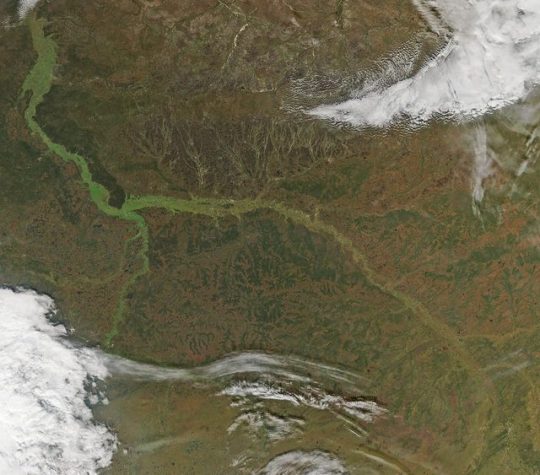
The Ob River Valley in Siberia (September 2016).
The Ob River, westernmost of the three great Siberian rivers, begins in the Altai Mountains, and flows north and west for over 4000km, ending in the Kara Sea.The environmentally rich river valley includes forests, meadows, wetlands and agricultural land. Broad floodplains lying next to the river are particularly rich, but often flooded when the winter's snow and ice melts each year. Over 170 species of birds nest in the floodplains, and about 50 species of fish live can be found in the river, including several species of sturgeon.
The largest tributary to the Ob River is the Irtysh River, which flows southwards from the Mongolian Altai Mountains in Xinjiang (China) to meet the Ob at the town of Khanty-Mansiysk. The Ob-Irtysh river system forms a large drainage basin in Asia, encompassing most of Western Siberia and the Altai Mountains.
#geography#potamology#rivers#russia#china#mongolia#siberia#khanty-mansi autonomous okrug#xinjiang#dzungaria#khanty-mansiysk#ob river#irtysh river#altai mountains
6 notes
·
View notes
Photo

#khanty #mansiysk Sibiria, nowhere land #travel #instagram #fun #reisen #hasstdublog #backpacking #snapwidget #wanderlust Bit.ly/hstblck Bit.ly/fbhstblck ©️Stahnie (hier: Khanty-Mansi Autonomous Okrug)
0 notes
Text
Gazprom Neft, Repsol sign MOU for development in Russia
Gazprom Neft has signed a Memorandum of Understanding with Spain’s Repsol. The Memorandum outlines areas for evolving collaboration through a joint enterprise to develop hydrocarbon resources in the Khanty-Mansiysk Autonomous Okrug-Yugra. The document was signed by Gazprom Neft CEO Alexander Dyukov and Repsol CEO Josu Jon Imaz. ...» http://dlvr.it/PSxgH9
0 notes
Photo
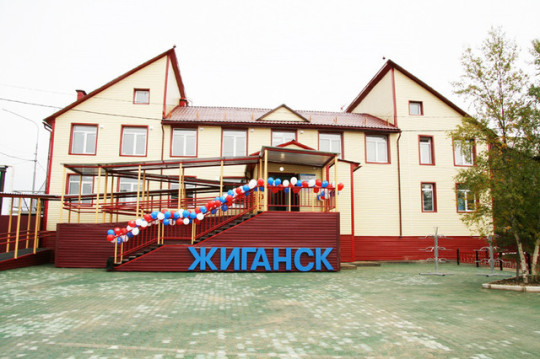
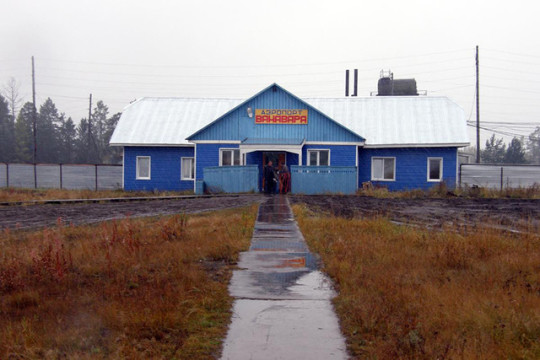
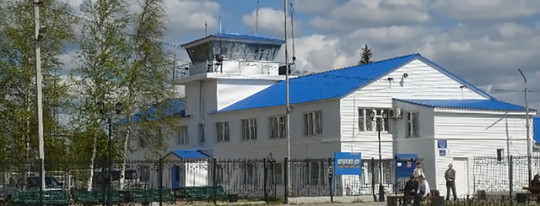
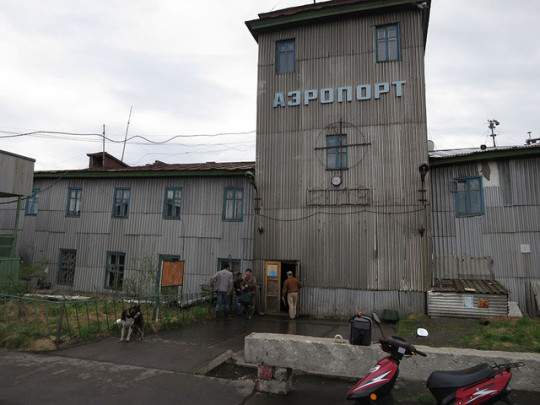
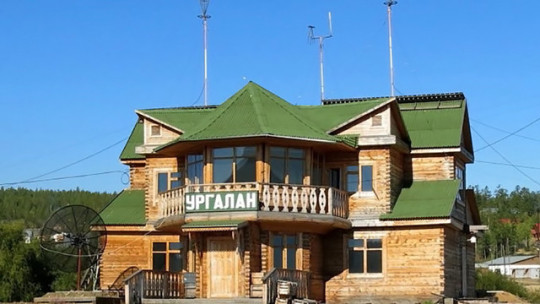
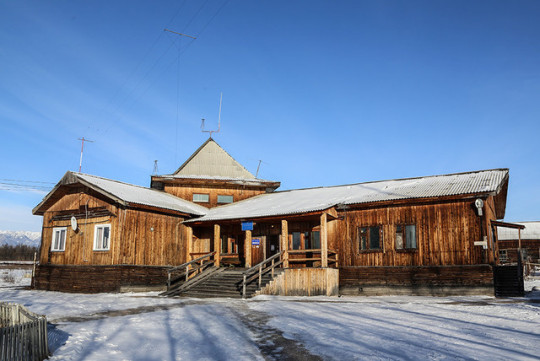
Wooden Airports in Russia:
Zhigansk Airport (Sakha Republic).
Zhigansk had a population of 3.420 in 2010, and there is no year-round access by road. In the summer, the village can be reached by boat via the Lena River; when the river is frozen, there is a winter road leading to Yakutsk.
The airport has regular flights to Yakutsk and other settlements, and also helicopter flights. The building pictured above is new.
Vanavara Airport (Vanavara, Krasnoyarsk Krai).
The Ilimpeya River cuts off regular road access, so it is only possible to arrive by car in winter. North-east of the village is the airport, with a concrete runway as well as a forest clearway reaching for 3km, which suggests that it may have been longer in the past. Flights from the neighbouring town are twice a week.
Igrim Airport (Igrim, Khanty-Mansi Autonomous Okrug).
This village is located on the right bank of the Sosva River. Several large natural gas fields were discovered and developed here during the 1960s, and an airport was built as a result. The airport has a dirt runway, probably the only one in Russia, and there are flights to Khanty-Mansiysk (administrative centre of the okrug), Beryozovo and Tyumen.
Khatanga Airport (Khatanga, Krasnoyarsk Krai).
This major airport is the largest Arctic airport, and is in use 24/7 throughout the year. It is a hub for tourist expeditions to the North Pole via the island of Sredny Ostrov. As the Arctic regions are still sensitive military zones, Khatanga is the first stop that requires entry permission from Federal Security Service border guards.
Khatanga Airport has flights to Krasnoyarsk and Norilsk, as well as local flights. It is only equipped for landings during good weather, but serves as a diversion airport for twin-engine airliners who suffer engine problems while flying over Siberia. Interceptor aircraft were based here during the 1970s, and possibly also deployments from Bratsk (Irkutsk Oblast).
Uorgalan Airport (Uorgalan, Khabarovsk Krai).
This regional airport services work in the Kondyor Massif deposit of precious metals.
Chara Airport (Chara, Zabaykalsky Krai).
In the past, the village of Chara was the centre of the local gulag, and prisoners were brought here from Chita on small planes. The runway was prepared by geologists who found deposits of copper and uranium nearby.
The airport is open only in the daytime, as it is surrounded by the high Kodar Mountains. Flights run to Chita's Kadala Airport three times a week.
#history#military history#aviation history#transportation#architecture#soviet architecture#russian architecture#ussr#russia#siberia#sakha republic#krasnoyarsk krai#khanty-mansi autonomous okrug#khabarovsk krai#zabayalsky krai#zhigansk#vanavara#igrim#khatanga#uorgalan#chara#chita#gulags
42 notes
·
View notes